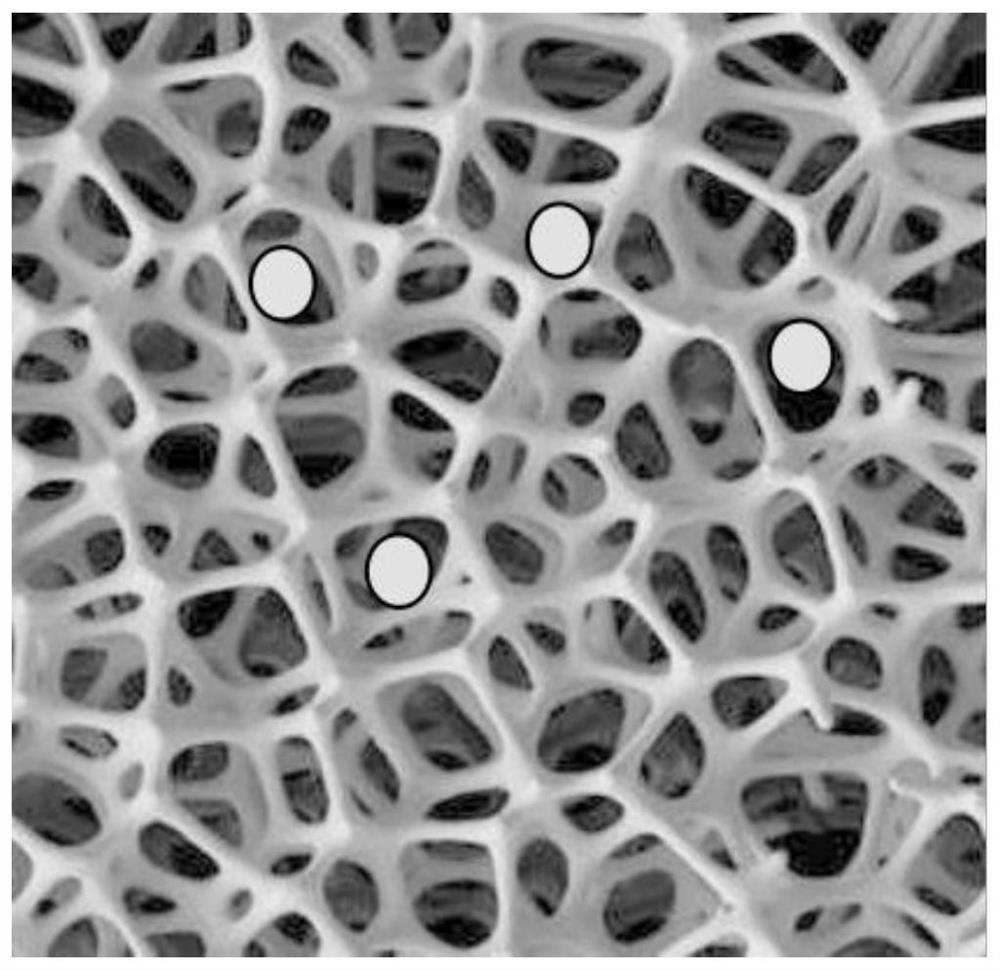Method for Separation of Sperm in Mixed Spot Using Porous Material
A technology of porous materials and mixed spots, applied in the field of forensic separation of mixed cells, can solve the problems of widespread use in difficult laboratories, undetectable sperm cells, and high requirements for experimental conditions, avoiding the problem of mixed typing and optimizing the reagent system. , the effect of simple operation
- Summary
- Abstract
- Description
- Claims
- Application Information
AI Technical Summary
Problems solved by technology
Method used
Image
Examples
Embodiment 1
[0026] Example 1 Making a Porous Material Adsorbent
[0027] To make a porous material adsorption piece, follow the steps below:
[0028] Choose a three-dimensional network porous material, the material of the porous material is stainless steel or silicon carbide or nickel or chromium or titanium, the pore size of the micropores is 1-15 microns, which can be purchased directly from the market.
[0029] First make the porous material adsorption piece, the thickness of the porous material adsorption piece is 0.5-3 mm, and can be made into a circular sheet or a square sheet. The porous material adsorption sheet is embedded in the hollow tube with both ends open to obtain the following figure 1 The porous material adsorption piece shown is mainly composed of a hollow tube 1 open at both ends and a porous material adsorption sheet 2. The porous material adsorption sheet 2 is arranged in the middle of the hollow tube 1, and the porous material adsorption sheet 2 connects the hollow...
Embodiment 2
[0030] Example 2 Application of Porous Material to Separation of Sperm in Mixed Spots
[0031] The porous material adsorption piece made in Example 1 is used to separate the sperm in the mixed spot, and the whole separation process is as follows figure 2 shown, follow the steps below:
[0032] 1) Pretreatment of mixed spots
[0033] Cut a proper amount of physical evidence mixed with sperm and other components such as female vaginal swabs, underwear, bed sheets, etc., put it into a centrifuge tube, add an appropriate amount (200-5000 μL) of cell eluent, shake for tens of seconds, discard the carrier, and centrifuge to obtain sperm The mixture with other components is 200-5000 μL. Cell eluent was 0.9% saline.
[0034] 2) Combination of sperm and porous material
[0035] Take the porous material adsorbent made of the hollow tube with both ends open in Example 1, put the porous material adsorbent into the centrifuge tube, then add the mixed solution of the sperm and other co...
Embodiment 3
[0047] Evaluation of embodiment 3 separation effect
[0048] 1. Using the method in Example 2, collect the semen of adult volunteers, count with a cytometer, and dilute the sperm to 10,000 / mL, 5,000 / mL, 3,000 / mL, 1,000 / mL, and 500 / mL , 100 cells / mL; oral epithelial cells were collected from adult volunteers, counted using a cell counting board, and the oral epithelial cells were made into 10,000 cells / mL. Different numbers of sperm suspensions and oral epithelial cells prepared above were mixed respectively to prepare different numbers of sperm-oral epithelial cell mixtures. Step 4) is not used this time, step 5) is directly performed after step 3), and then the detection is performed:
[0049] 1) The sperm DNA template obtained in step 5) is quantified by ultraviolet spectrophotometer or fluorescent real-time PCR, and the DNA concentration measured is above 0.1ng;
[0050] 2) Take 1-4 microliters of the above-mentioned DNA template, and perform multi-site multiplex amplific...
PUM
| Property | Measurement | Unit |
|---|---|---|
| thickness | aaaaa | aaaaa |
| pore size | aaaaa | aaaaa |
Abstract
Description
Claims
Application Information
 Login to View More
Login to View More - R&D
- Intellectual Property
- Life Sciences
- Materials
- Tech Scout
- Unparalleled Data Quality
- Higher Quality Content
- 60% Fewer Hallucinations
Browse by: Latest US Patents, China's latest patents, Technical Efficacy Thesaurus, Application Domain, Technology Topic, Popular Technical Reports.
© 2025 PatSnap. All rights reserved.Legal|Privacy policy|Modern Slavery Act Transparency Statement|Sitemap|About US| Contact US: help@patsnap.com



